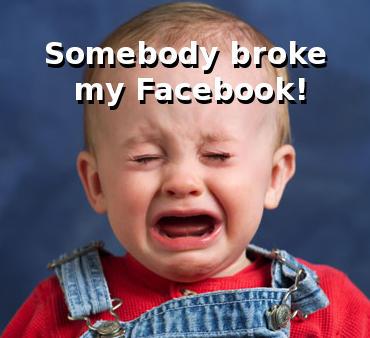I have seen Facebook as product scale up since 2006, there was a time I believed this one could never go down. Unfortunately, I don’t see myself using Facebook everyday now. In tech world, products that reach this scale do not fail, they become irrelevant.
Facebook is fast becoming irrelevant and replaceable in our life. I love Facebook and really admire Mark Zuckerberg for building it one. I still think Facebook can still turn around and be that important part of our lives again.
Here are few things that Facebook needs to fix in its product:
1. Feeds & Notifications
Feeds and Notifications are (were?) the lifelines of Facebook. Both are quickly losing its relevance to create engagement.
The challenge with Facebook is you are subscribed to multiple content units. This includes updates from –
a. Friends & Contacts
b. Pages you ‘Liked’
c. People you ‘Follow’ or ‘Subscribed to’
d. Open Graph Integrations & Updates through Social Plugins
e. Promoted Posts
There is clearly too much of information that user gets subscribed to and its obvious that the Edgerank is failing to discover the most appropriate post for its users.
Edgerank has multiple flip points! It works on the fact that people / pages that you interact recently or regularly show up more frequently in your feeds, or the ones in your social circle that has higher engagement. That results in missing out other important updates from friends / contacts, missing that important update from your favorite band and so on.
Same with notifications, there are many irrelevant notifications that are shown on Facebook which over a time lose value for notifications all together. Facebook should restrict notifications only to posts / updates important to the user.
Facebook’s Edgerank struggles to discover the best post for you hoping that you will engage. Twitter simply says you missed it if you didn’t see it, so if you don’t want to miss any update – stay logged in. Twitter clearly works well here.
Facebook needs to fix its Edgerank to sustain itself. Maybe completely moving to a Twitter like time line will make more sense for Facebook.
2. Instant Messaging
Have read a lot of posts about how Facebook should be worried about Instant Messaging Apps like WhatsApp, SnapChat and others. While most of the posts put up the metrics like number of messages shared or photos uploaded or so on to compare them with FB, they miss a simple and crucial point on what makes them successful.
Facebook is a network that connects your family and friends. Instant Messaging apps like WhatsApp ‘connect them faster’. This was the perfect way to disrupt Facebook and it worked! Its no surprise that younger generation does not connect with Facebook- why should one sign-up, create a profile, upload status & photos and so on? Just download a Instant Messaging app and get started. Honestly, Facebook today is delayed WhatsApp’ing.
WhatsApp should have been acquired by Facebook long time back, there were rumors. But to continue to be relevant, its time that Facebook should now stop looking at its ‘messaging’ feature as a feature – but as core proposition!
Update: Few people pointed out that Facebook Messenger lets you sends instant messages like WhatsApp to anyone. I checked this again, but it looks that FB Messenger works with users who have registered their phone number with a Facebook Account. The Instant Messages are sent through to the Facebook messages in your profile. Nevertheless, the point I wanted to suggest here is Instant Messaging should become the core proposition of Facebook who wants to connect the world, and not its feature.
3. Developers
Its been more than 2 years that the last F8 conference was held, clearly Facebook does not have anything great on its plate for developer community. This is bad news for thousands of application developers who use Facebook (Connect) as primary platform to build their applications.
Distribution on top of Facebook is almost non-existent now (Read: Rethinking Facebook Connect). Eventually this will lead to developers looking for other platforms to build on top of it.
Twitter will stand to gain the most out here at this point of time. Google has been silently integrating Google+ to many of its services, if Google can provide ‘distribution’ as incentive to developers, there might be still hope for Google+ (of which I had been skeptical from day 1)
4. Facebook Pages are Dead.
When Facebook Pages were introduced, there was a gold rush among Marketers and Brands to get as much Likes or Fans as possible build an captive audience and engage with them on a regular basis.
Facebook pages are dead now, its effective reach is reduced to mere 2% of audience and practically they drive zero new likes / fans to the page as virality is almost dead. As a marketer, I would expect the posts shared on my pages to reach majority (if not all) of its audience.
If the only way to get any sort of engagement now is paid posts, marketers will soon realize the same and will start abandoning the Facebook. Instead Marketers will prefer sending traffic to their own website over Facebook Pages. Facebook should fix this.
5. Publishers
Millions of publishers use the Facebook Social Plugins, more particularly Like, Share widgets on their websites; the motivation here is to drive more traffic (users) from Facebook. It worked earlier as Facebook was a awesome discovery platform to know social actions of friends & contacts.
As engagement and virality of Facebook platform has decreased, these social plugins are proving to be lesser effective in driving more users / traffic to publishers.
6. No Mobile Presence
Post IPO Facebook (and analysts) were worried that Facebook did not have a solid mobile monetization strategy in place. Its solved now as mobile revenue contributes significantly to Facebook’s revenue. However I think it was not so much about mobile revenue, Facebook missed the mobile ecosystem completely. It does not own any of the core-experiences on mobile.
Look at smartphone on device strategy –
- Calendar is owned by Google (Calendar).
- Contacts are owned Google (Gmail).
- Messaging is owned by WhatsApp & others.
- Camera was owned by Instagram (acquired by Facebook) but faces intense competition from other apps like – Twitter, SnapChat, FrontBack, WhatsApp and others.
- Location is owned by Google (Maps).
- AppStores are closed. Owned by Google or Apple.
While Facebook Home was a great attempt at ‘hijacking’ the phone experience, but with no value attached for users the product dried down quickly. With no deeper integration on phone, Facebook is just another app. And as other apps deliver more value while communicating with friends, Facebook is very vulnerable to being an ‘optional app’.
——————————————————————————————————————-
Concluding Notes:
Facebook needs to re-think its strategy and focus on making its product relevant. Not just for its users, but also for other stake holders like Developers, Marketers, Publishers and so on.
Out of context, but I find Facebook’s intention of getting the entire planet online (Internet.org) ridiculous and a big distraction for both – Facebook & Zuck. Facebook did an amazing job of getting over 1 Billion Users on its platform, but to think that Facebook and its partners (of Internet.org) will manage to get the next 2 Billion Users online is absurd.
Unfortunately for Facebook, the next Billion users will come online because of instant messaging apps. For now, Facebook should just concentrate on its product.

